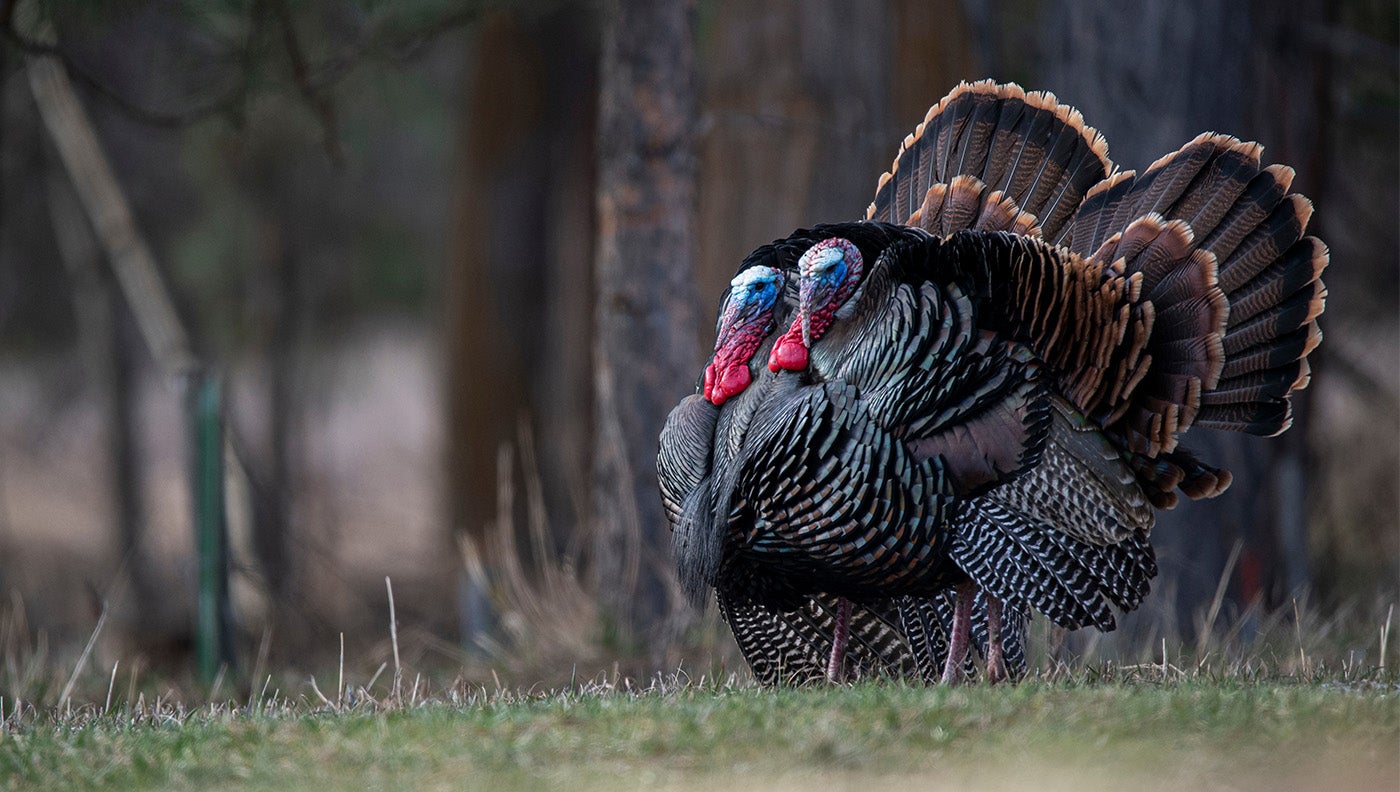How to Hunt the Best Day of the Strut No. 6: May 15

We may earn revenue from the products available on this page and participate in affiliate programs. Learn more ›
In our last installment of the The Best Days of the Strut 2023, we’d just flipped the calendar to perhaps the turkey hunter’s favorite month, with seasons open across the nation, the weather improving by the day, and gobblers ready to play. Now that we’re well into May, an increasing number of hens are more serious about nesting, leaving gobblers—including some of the spring’s most long-spurred specimens—vulnerable to calling. While seasons are winding down (or closed altogether) in the South, hunting across much of the rest of turkey range will probably be as good as it gets all season. With the woods greening up, it’s easier to move tight to a gobbler and work him into gun range. And, hey, if you’re a morel mushroom hunter, you might have some additional luck after you’ve tagged your gobbler.
The Pro: Shane Simpson, Minnesota
Shane Simpson shows off a big Minnesota tom. Shane Simpson
Shane Simpson is an expert gobbler hunter who has been filming his hunts since he was a teenager. His YouTube channel is packed with excellent tips on turkey vocalizations, hunting tactics, calling, and successful hunts. While he calls Minnesota home, Simpson has hunted gobblers across the nation. He’s also an avid public-land whitetail hunter, but this time of year, is all turkeys, all the time for Simpson.
The Strut Stage: Immediate Post-Breeding
We’re on the backside of the turkey rut’s bell-shaped curve. The majority of hens have been bred, and many are setting, which means that they’re basically out of the breeding picture altogether. Remaining hens have started laying their one egg per day and are limiting their daily travel to areas close to their nests. In short, more gobblers are finding themselves alone for a large portion of the day, which makes them vulnerable to hunters who haven’t given up or been distracted by other warm-weather activities.
Expert Tactic for May 15: Triangulate a Roosted Tom
The old saying “roosted ain’t roasted” comes from the the many SNAFUs that can occur on a morning hunt following a successful roosting the evening before. While Simpson has experienced those train wrecks as often as anyone, he insists that right now is a perfect time to roost a tom at night and tag him at dawn. “It’s my go-to tactic this time of year, and it can be scary-effective,” he told F&S. “Last spring, we killed about 90 percent of the toms I roosted the night before (Simpson calls for many friends, typically on public-land gobblers) in the mid- to late-May period.”
The difference now, he said, is the breeding phase. “With most hens nesting now, almost every gobbler is roosting alone. If I can pin him down in the evening, I feel I have an excellent chance at calling him in first thing in the morning.” Simpson’s roosting method is very precise. “I start driving roads close to the grounds I want to hunt, about 45 minutes before dark,” he said. “The best roost gobbling is typically 30 minutes before official sunset, but I’m always ready if one starts earlier than that. I’ll stop and owl hoot on my favorite owl call, which is Hook’s Hootin’ Stick. If that doesn’t work I go to a coyote howl, and if they don’t gobble to that I’ll yelp at them. And as soon as I get a gobble, I move slightly to try and get a second gobble from the same bird, which allows me to really nail down his location by triangulating it from at least two locations, and I use those to drop a pin on my OnX app that marks the roost site. Then if I have time, I drive on and try to find another bird if possible.”
Later in the evening after he’s been roosting, Simpson looks at the gobbler pins on his app and zeroes in on the one that offers the best access and chances of success. “Ideally I want a bird roosted on a long wooded point that leads to an ag or CRP field,” he said. “That night I’ll look at the pin on the app, measure 75 to 100 yards from that spot, and drop a second pin, which is where I plan to set up in the morning. And using my app, I walk exactly to that spot in the dark, before a single bird is awake. At first it was hard to rely completely on technology like this, but I’ve learned to trust it. Because when dawn comes, I’ve snuck to within 100 yards before that first gobble. Even if I have to make a slight adjustment as it gets light, I’m already set up before fly-down, and I know that bird is in a whole lot of trouble.”
The post How to Hunt the Best Day of the Strut No. 6: May 15 appeared first on Field & Stream.
Articles may contain affiliate links which enable us to share in the revenue of any purchases made.
